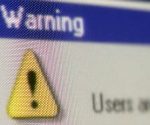The Department of Homeland Security established October as National Cyber Security Awareness Month to educate the public and businesses about cyber security.
Stephen Morris, Community Moderator for the Small Business Association’s (SBA) blog recently wrote a blog about this initiative. Below are some of the highlights.
Mr. Morris notes nine (9) steps your business can take to improve your cyber security. He provided great detail for each of the steps which you can read in their entirety by clicking here.
- Use the FCC’s Small Biz Cyber Planner to create a cyber security plan and establish cyber-security rules for your employees
- Protect against viruses, spyware, and other malicious code
- Educate employees about safe social media practices
- Manage and assess risk
- Download and install software updates when they are available
- Make backup copies of important business data and information
- Control physical access to computers and network components
- Secure Wi-Fi networks
—
As we constantly use our computers and the various mobile devices, as well as Wi-Fi connections – we all need to be aware of the risks and how we can protect our identities, our businesses and ourselves.
The SBA provides a lot of useful information for starting and managing your business. The information is free – so there’s no excuse not to visit the site to get the information you need to protect your business investment.

